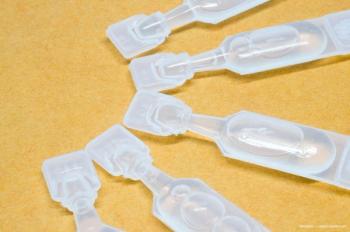
Sulcus refractive IOLs solid option for presbyopia, other refractive errors
Implantation of a sulcus-supported, pseudophakic supplementary intraocular lens (IOL) can be a safe and effective method for improving vision in eyes with residual refractive error after cataract extraction, refractive lens exchange, or keratoplasty, said Thomas Kohnen, MD, PhD. It also can be used to provide reversible presbyopia correction.
Implantation of a sulcus-supported, pseudophakic supplementary intraocular lens (IOL) can be a safe and effective method for improving vision in eyes with residual refractive error after cataract extraction, refractive lens exchange, or keratoplasty, said Thomas Kohnen, MD, PhD. It also can be used to provide reversible presbyopia correction.
“Sulcus refractive IOLs can be considered as an alternative to spectacles, contact lenses, incisional techniques, and laser-based corneal surgical procedures to correct residual refractive error that is having a negative impact on visual quality,” said Dr. Kohnen, professor and chairman, Department of Ophthalmology, Gothe-University, Frankfurt, Germany.
Dr. Kohnen pointed out that in the literature and in his experience, complications with the add-on IOLs are rare. “Antero-posterior and rotational movement of the IOL can occur,” he added. “Because of how these lenses are designed, we almost never see interlenticular opacification or pigment dispersion that are problems associated with piggyback lenses.”
Pseudophakic supplementary IOLs were introduced in Europe about 10 years ago, and they are available from two manufacturers in aspheric, toric, and multifocal versions.
HumanOptics (Erlangen, Germany) was the first company in the market with its Add-On IOLs. These lenses have a 7.0-mm silicone optic and PMMA haptics with a 0° angulation. The lenses have an overall diameter of 14 mm, and the multifocal version is based on diffractive technology.
“The concave posterior surface of the optic prevents contact with the primary IOL and the optic has a round anterior edge for iris protection,” Dr. Kohnen said. “In addition, the haptics of the toric models have undulations that are well-proven to prevent rotation.”
The Sulcoflex IOLs from Rayner (Hove, United Kingdom) are another option. These lenses are made of a hydrophilic acrylate material and have specially designed waved haptics with a 10° angulation. The optic has a 6.5-mm diameter with a convex-concave structure, and the overall lens diameter is 13.3 mm. The multifocal IOL has a refractive design.
“All of the supplementary IOLs are relatively thin because they are designed to correct lower amounts of residual refractive error,” Dr. Kohnen said.
Outcomes in the literature
A review of published studies reporting outcomes with use of the sulcus IOLs show positive results.
Reporting on a series of 12 eyes, Kahraman and Amon found mean ± standard deviation (SD) spherical equivalent (SE) decreased from -1.25 D ± 0.25 D (SD) to -0.25 D ± 0.40 D [J Cataract Refract Surg. 2010;36(7):1090-1094]. All eyes achieved improvement in distance uncorrected visual acuity (UCVA), and there were no significant intraoperative or postoperative complications.
Sauder reported experience using an add-on toric IOL to correct astigmatism in postkeratoplasty pseudophakic eyes [Ophthalmologe. 2007;104(12):1041-1045]. The review included 5 eyes with mean preoperative astigmatism of 6.78 D ± 1.14 D that was reduced to 1.82 D ± 0.59 D. There were also no complications in this series, nor any need for secondary surgery.
Papers reporting on the use of an add-on multifocal IOL include a prospective study by Gerten et al. that included 56 eyes of 30 cataract patients who received an aspheric silicone monofocal IOL in the capsular bag, followed by sulcus placement of the add-on multifocal lens [J Cataract Refract Surg. 2009;35(12):2136-2143]. The results from follow-up to 3 months showed the dual IOL implantation led to improved distance, intermediate, and near UCVA, and there were no major complications.
Liekfeld et al. reported a study comparing groups of cataract surgery patients who had bilateral implantation of a diffractive multifocal IOL in the capsular bag or a monofocal IOL in the bag followed by sulcus placement of an add-on diffractive multifocal IOL. The study included 26 patients and found the two techniques were associated with equivalent visual performance, and there were no significant differences in patient satisfaction between groups.
Thomas Kohnen, MD, PhD
This article is based on a presentation given by Dr. Kohnen at the Refractive Surgery Subspecialty Day held prior to the 2016 American Academy of Ophthalmology meeting. He has no relevant financial interests in any of the products mentioned.
Newsletter
Don’t miss out—get Ophthalmology Times updates on the latest clinical advancements and expert interviews, straight to your inbox.



















































.png)


